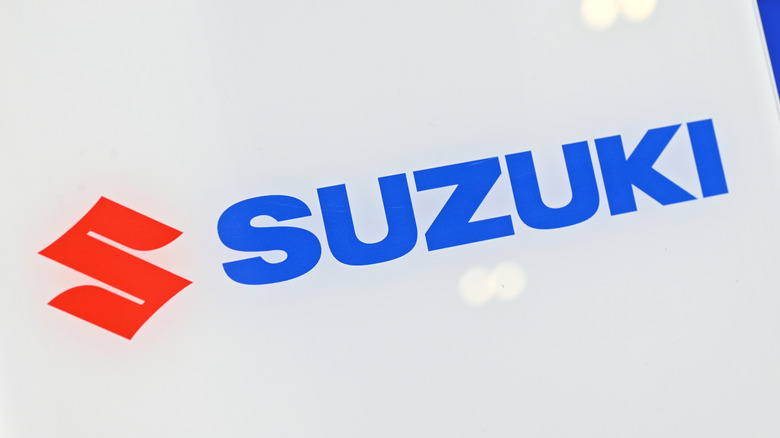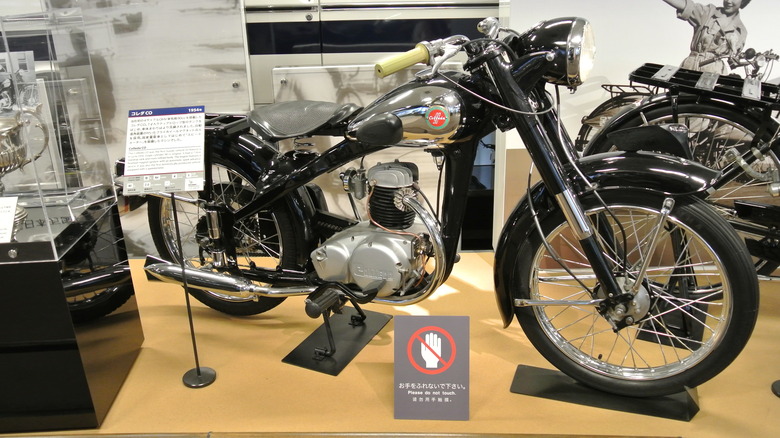Where Are Suzuki Motorcycles Made, And Who Owns The Company Now?
Suzuki makes some of the best motorcycles on the road, from dirt bikes to superbikes, and there are plenty of popular models to choose from. However, the company didn't start out making things with wheels until much later down the road.
In 1909, Michio Suzuki created a company not to make motorcycles (or even cars), but looms — the mechanical devices that weave cloth and have been around since the 5th millennium BCE. Michio built one from wood and iron for his mother, and it reportedly was capable of weaving 10 times faster than anything used at the time. Suzuki Loom Works was born from this inspiration, and Michio aimed to mass-produce his new design and take advantage of Japan's huge cotton and silk industries.
In 1920, still waiting to make something with wheels, the company underwent restructuring. It incorporated and changed names to Suzuki Loom Manufacturing Co., and Michio became company president. Over the next few decades, the company grew and in 1939 built a new plant in Shizuoka, Japan.
Around this time (either 1937 or 1939, depending on the source), Suzuki came to understand the need for diversification and seized upon a growing consumer demand for an affordable compact vehicle. Prototypes were developed using 750cc to 800cc liquid-cooled, four-stroke, four-cylinder engines with cast aluminum crankcases and gearboxes that could produce 13 hp.
This is the one
Despite getting listed on the Tokyo, Osaka, and Nagoya stock exchanges in 1949, it took Suzuki a few more years to get back into the swing of things. In 1952, the company reentered the vehicle market with the launch of its first motorized bicycle — the Power Free, powered by a 36cc, two-stroke engine attached to the bike frame. It had a special double-sprocket gear system allowing riders to cruise along under the engine's full power, pedal with some help from the engine, or shut it off entirely and go full human pedal power. It was a revolutionary feature at the time and a huge success.
In 1953, the 60cc Diamond Free sold more than 6,000 units a month, and the company changed its name to Suzuki Motor Co., Ltd. and launched its first motorcycle in 1954. The Colleda CO (meaning "This is it!" or "This is the one!") was powered by a 90 cm³ 4-stroke OHV 1-cylinder engine generating roughly three horsepower.
The following year, the Suzulight "mini car" was unveiled with a 360cc, 2-stroke engine. The now well-known Suzuki "S" became the corporate emblem in 1958.
Although Suzuki stopped selling cars — like the popular Samurai 4x4 — in North America in 2012, it still makes them in other parts of the world. It also sells some of the best superbikes on the market (including the legendary Suzuki Hayabusa), ATVs, outboard motors for marine use, other internal combustion engines, and even motorized wheelchairs.
[Featured image by Rainmaker47 via Wikimedia Commons | Cropped and scaled | CC BY-SA 3.0]
Suzuki has a global footprint
Starting in the early 80s, Suzuki — as a publicly traded entity — began taking on significant shareholders. In 1981, General Motors purchased a 5.3% stake, but when Suzuki issued more shares four years later (1985), GM's holding dipped to 3.5%. In 1998, GM bought more shares and bolstered its percentage to 10%; it made another purchase in 2001, upping its holding to 20%. Five years later (2006), however, it dropped its stake all the way down to 3%.
But in 2009, another suitor called. Germany's Volkswagen AG swooped in and grabbed 1/5 of Suzuki for $2.5 billion. That partnership didn't last long, though, as in 2011, Suzuki began legal proceedings to get its shares back after realizing VW was trying to take control of the company. Suzuki finally got VW's 19.9% stake back for $1.9 billion in 2015.
In August 2019, Toyota Motor Corporation and Suzuki Motor Corporation entered a capital alliance agreement wherein Toyota acquired a 4.94% stake in Suzuki, while Suzuki acquired a 0.21% stake in Toyota. However, since Suzuki is still a publicly traded company, it has other shareholders, including The Master Trust Bank of Japan (at 10.4%) and Custody Bank of Japan Ltd. (at 5.24%).
Suzuki's motorcycles are built in several locations around the globe, including Japan, India, China, Indonesia, Taiwan, Thailand, Cambodia, the Philippines, Pakistan, Brazil, Argentina, Colombia, Vietnam, and the United States by American Suzuki Motor Corporation (American Suzuki).

